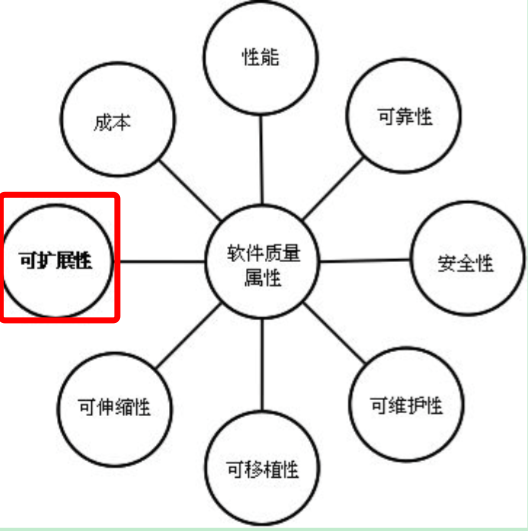编程范式(流派):
面向对象编程,面向过程编程 各有用处!!
编程:语法+数据结构(list dict)+算法(逻辑)
-----------------------------------
1.面向过程编程:核心是过程二字,过程指的是解决问题的步骤,设计一条流水线,机械式的思维方式
优点:复杂的问题流程化,进而简单化---系统监控脚本,自动部署脚本之类的,eg:软件包解压安装(不再需要扩展了)就可以使用面向过程的思维编写代码
缺点:可扩展性差,牵一发而动全身
1 # 注册
2 import json
3 import re
4
5 def interative():
6 name = input('>>:').strip()
7 password = input(">>").strip()
8 email = input('>>').strip()
9 return {
10 'name': name,
11 'password': password,
12 'email': email
13 }
14
15
16 def check(user_info):
17 is_valid = True
18
19 if len(user_info['name']) == 0:
20 print('用户名不能为空')
21 is_valid = False
22
23 if len(user_info['password']) < 6:
24 print('密码不能少于6位')
25 is_valid = False
26
27 if not re.search(r'@.*.com$', user_info['email']):
28 print('邮箱格式不合法')
29 is_valid = False
30
31 return {
32 'is_valid': is_valid,
33 'user_info': user_info
34 }
35
36
37 def register(check_info):
38 if check_info['is_valid']:
39 with open('db.json', 'w', encoding='utf-8') as f:
40 json.dump(check_info['user_info'], f)
41
42
43 def main():
44 user_info = interative()
45
46 check_info = check(user_info)
47
48 register(check_info)
49
50
51 if __name__ == '__main__':
52 main()
2.面向对象编程:核心就是对象二字,对象就是特征与技能的结合体 --站在上帝的角度想问题,一切事物都是对象!
优点:可扩展性强
缺点:编程复杂度高
应用场景:用户需求经常变化,互联网应用,游戏,企业内部应用

类就是一系列对象相似的特征与技能的结合体
强调:站在不同的角度,得到的分类是不一样的
在现实世界中:一定先有对象,后有类
在程序中:一定得先定义类,后调用类来产生对象
站在路飞学院的角度,大家都是学生
在现实世界中:
对象1:王二丫
特征:
学校='luffycity'
名字='王二丫'
性别='女'
年龄=18
技能:
学习
吃饭
睡觉
对象2:李三炮
特征:
学校='luffycity'
名字='李三炮'
性别='男'
年龄=38
技能:
学习
吃饭
睡觉
对象3:张铁蛋
特征:
学校='luffycity'
名字='张铁蛋'
性别='男'
年龄=48
技能:
学习
吃饭
睡觉
总结现实中路飞学院的学生类:
相似的特征
学校='luffycity'
相似的技能
学习
吃饭
睡觉
1 # 先定义类:
2 class LuffyStudent:
3 school = 'luffycity'
4
5 def learn(self):
6 print('is learning')
7
8 def eat(self):
9 print('is eatting')
10
11 # 后产生对象
12 stu1 = LuffyStudent
13 stu2 = LuffyStudent()
14 stu3 = LuffyStudent()
15
16 print(stu1)
17 print(stu2)
18 print(stu3)
3.如何使用类
类是定义就运行
函数是调用才运行
类的用途:
1.操作它的属性 增删改查
2.实例化 产生对象
1 class LuffyStudent:
2 school='luffycity' # 数据属性
3
4 def learn(self): # 函数属性
5 print('is learning')
6
7 def eat(self): # 函数属性
8 print('is sleeping')
9 # print('---') # 类是定义,就运行
10
11 #查看类的名称空间
12 # print(LuffyStudent.__dict__)
13 # print(LuffyStudent.__dict__['school'])
14 # print(LuffyStudent.__dict__['learn'])
15
16 #查
17 # print(LuffyStudent.school)
18 # print(LuffyStudent.learn)
19
20 #增
21 LuffyStudent.country = 'china'
22 print(LuffyStudent.__dict__)
23 # print(LuffyStudent.country)
24
25 #删
26 del LuffyStudent.country
27 print(LuffyStudent.__dict__)
28
29 #改
30 LuffyStudent.school = 'LuffyCity'
31 print(LuffyStudent.__dict__)
4.__init__方法
__init__方法用来为对象定制对象自己独有的特征
__init__实例化对象时会自动调
1 class LuffyStudent:
2 school = 'luffycity'
3
4 def __init__(self,name,sex,age):
5 self.Name=name
6 self.Sex=sex
7 self.Age=age
8
9 def learn(self):
10 print('is learning')
11
12 def eat(self):
13 print('is eatting')
14
15 # 后产生对象
16 stu1 = LuffyStudent('alice','女',18)
17
18 #加上__init__方法后,实例化的步骤
19 #1.先产生一个空对象stu1
20 #2.触发函数 LuffyStudent.__init__(stu1,name,sex,age)
21
22 #查
23 # print(stu1.__dict__)
24 # print(stu1.Name)
25 # print(stu1.Age)
26
27 #改
28 stu1.Name = 'alex'
29 print(stu1.__dict__)
30 print(stu1.Name)
31
32 #删
33 del stu1.Name
34 print(stu1.__dict__)
35
36 #增
37 stu1.class_name = 'python开发'
38 print(stu1.__dict__)
39
40 stu2 = LuffyStudent('lily','男',30) # Luffycity.__init__(stu2,'lily','男',30)
41 print(stu2.__dict__)
42 print(stu2.Name)
5.属性查找
1 # x = 'global'
2 class LuffyStudent:
3 school = 'luffycity'
4
5 def __init__(self,name,sex,age):
6 self.Name=name
7 self.Sex=sex
8 self.Age=age
9
10 def learn(self,x):
11 print('%s,%s is learning' % (self.Name,x))
12
13 def eat(self):
14 print('%s is eatting' % self.Name)
15
16 # 后产生对象
17 stu1 = LuffyStudent('alice','女',18)
18 stu2 = LuffyStudent('alex','男',38)
19 stu3 = LuffyStudent('lily','男',40)
20 # print(stu1.__dict__)
21 # print(stu2.__dict__)
22 # print(stu3.__dict__)
23
24 # 对象:特征与技能的结合体
25 # 类:类是一系列对象相似的特征与相似的技能的结合体
26
27 # 类中的数据属性:是所有对象共有的
28 # print(LuffyStudent.school)
29 #
30 # print(stu1.school,id(stu1.school))
31 # print(stu2.school,id(stu2.school))
32 # print(stu3.school,id(stu3.school))
33
34 # 类中的函数属性:是绑定给对象使用的,绑定到不同的对象是不同的绑定方法,对象调用绑定方法时,会把对象本身当作第一个传入,传给self
35 # print(LuffyStudent.learn)
36 # LuffyStudent.learn(stu1)
37 # LuffyStudent.learn(stu2)
38 # LuffyStudent.learn(stu3)
39
40 # print(stu1.learn)
41 # stu1.learn(1) #learn(stu1,4)
42 # print(stu2.learn)
43 # print(stu3.learn)
44
45 # stu2.learn(2)
46 # stu3.learn(3)
47
48 # 属性查找,对象会在自己内部找 --》类中找--》父类找--》不会去全局找
49 # stu1.x = 'form stu1'
50 # LuffyStudent.x = 'from LuffyCity class '
51 # print(LuffyStudent.__dict__)
52 # print(stu1.__dict__)
53 # print(stu1.x)
6.补充知识
1.站的角度不同,定义出的类是截然不同的;
2.现实中的类并不完全等于程序中的类,比如现实中的公司类,在程序中有时需要拆分成部门类,业务类等;
3.有时为了编程需求,程序中也可能会定义现实中不存在的类,比如策略类,现实中并不存在,但是在程序中却是一个很常见的类。
4.python 一切皆对象,在python3里统一了类与类型(list dict)的概念
1 # print(type([1,2]))
2 # print(list)
3 class LuffyStudent:
4 school = 'luffycity'
5
6 def __init__(self,name,sex,age):
7 self.Name=name
8 self.Sex=sex
9 self.Age=age
10
11 def learn(self,x):
12 print('%s,%s is learning' % (self.Name,x))
13
14 def eat(self):
15 print('%s is eatting' % self.Name)
16 # print(LuffyStudent)
17
18 li1 = [1,2,3] # li = list(1,2,3) # list 对象
19 li1.append(4) # 对象在调自己的绑定方法 # list.append(li1,4)
20 # list.append(li1,4) # 类中的方法 是给 对象用的
21 print(li1)
7.可扩展性高
1 class Chinese:
2 country = 'China'
3 def __init__(self,name,age,sex):
4 self.name=name
5 self.age=age
6 self.sex=sex
7 def eat(self):
8 print('%s is eating' % self.name)
9
10 p1 = Chinese('alice',19,'女')
11 p2 = Chinese('alex',22,'男')
12
13 print(p1.name,p1.country)
14 print(p2.name,p2.country)
15 p1.eat()
16 p2.eat()
